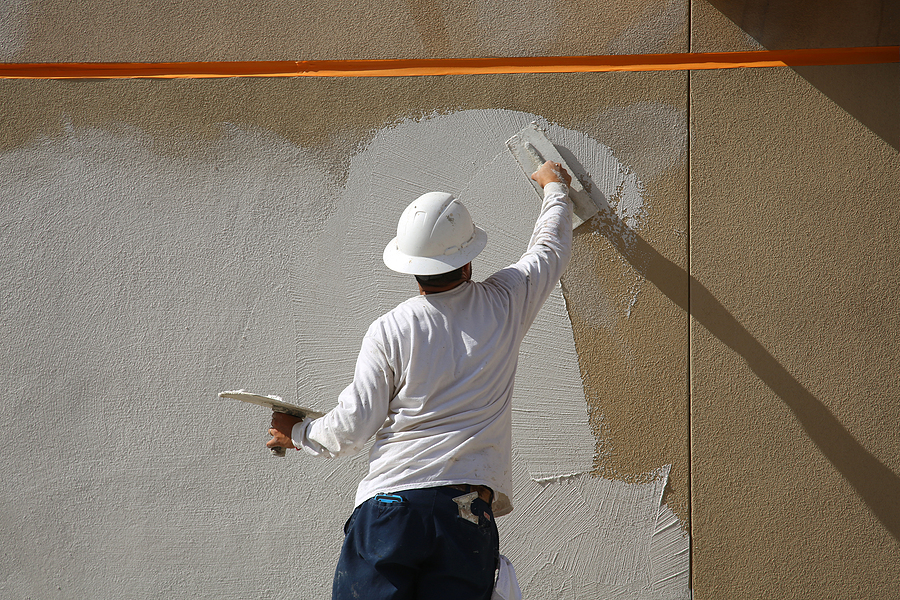How to Prevent Future Damage and Extend the Lifespan of Your Stucco in Vancouver for Dummies

A Step-by-Step Overview to DIY Stucco Repair in Vancouver
Stucco is a preferred outside finish for homes in Vancouver due to its longevity and visual beauty. Over time, having said that, stucco can easily cultivate splits and other kinds of harm that require to be dealt with. While choosing a expert is always an alternative, some house owners choose to take matters right into their own palms and try a DIY stucco repair service job.
If you're thinking about handling stucco repair on your very own, it's important to approach the job along with the ideal know-how and resources. In this step-by-step overview, we are going to walk you via the method of mending minor stucco damages on your Vancouver property.
Step 1: Determine the Damages
The initial action in any type of repair project is to evaluate the magnitude of the harm. Take a near appearance at your stucco outside and pinpoint any sort of cracks or places where the finish has cracked away. It's vital to calculate whether the damage is simply aesthetic or if it goes deeper into the underlying layers of your house's construct.
Step 2: Compile Materials
Once you have assessed the damage, compile all the required components for your stucco repair venture. This generally includes:
- Stucco mix: Select a high-quality stucco mix that matches the color and texture of your existing finish.
- Cable screen: Utilize cable net to bolster bigger gaps or locations where structural integrity has been endangered.
- Trowel: A trowel are going to be needed for administering and smoothing out the brand new stucco mix.
- Bucket and water: These are crucial for combining your stucco depending on to manufacturer guidelines.
- Defensive equipment: Wear gloves, safety glasses, and a face cover-up to safeguard yourself from potentially dangerous dirt bits.
Step 3: Ready the Surface area
Before applying brand new stucco, it's significant to properly ready the harmed area. Begin through cleaning off any loose clutter or old stucco from the affected place. Utilize a wire brush or a tension washer to remove gunk, dust, and loose particles. Permit the surface area to dry out totally just before moving on to the next action.
Step 4: Apply Stucco Mix
Mix your stucco depending on to the supplier's instructions. It's vital to attain the correct congruity – not also completely dry and not too damp. Once you have prepared your stucco mix, apply it to the damaged location using a trowel. Start by filling up in any type of cracks or spaces, making sure that the combination is evenly spread out around the surface.
Measure 5: Improve along with Wire Mesh (if needed)
For much larger gaps or regions where architectural honesty is weakened, bolster the mended part along with wire mesh. Reduced a piece of mesh a little larger than the ruined area and press it strongly into location over the new stucco mix. Make sure it sticks effectively and doesn't leave behind any gaps between the net and existing stucco.
Related Source Here : Smooth Out and Blend
Using your trowel, carefully smooth out the recently administered stucco mix so that it combinations effortlessly along with the neighboring finish. This step calls for perseverance and attention to detail as you function to attain a consistent structure.
Action 7: Make it possible for Time for Drying
After finishing all repair services, enable adequate opportunity for your newly patched stucco to dry totally. This might take many days relying on environmental disorders such as temperature and humidity amounts.
Action 8: Paint (if preferred)
Once your restored stucco has dried out carefully, you might decide on to paint over it for a extra finished appeal. Choose an outdoor paint color that matches or complements your existing stucco coating.
In conclusion, fixing slight stucco damage can be done through DIY attempts if moved toward the right way. Through observing this step-by-step quick guide in Vancouver, house owners can successfully take on their stucco repair jobs and sustain the stability and appeal of their residences. Nonetheless, it's essential to keep in mind that more considerable harm or structural concerns might call for qualified interference.

